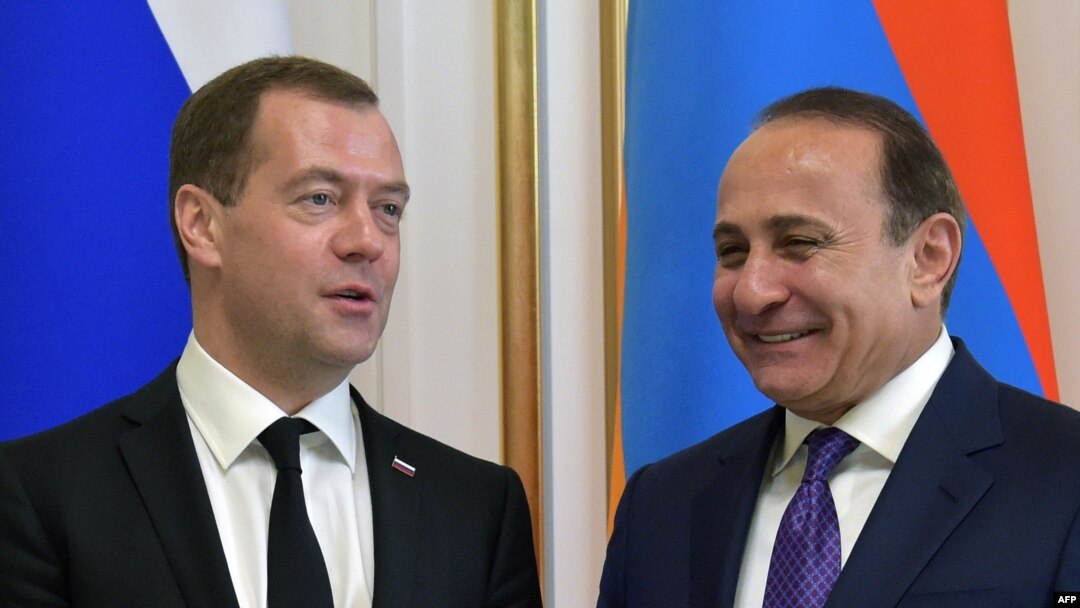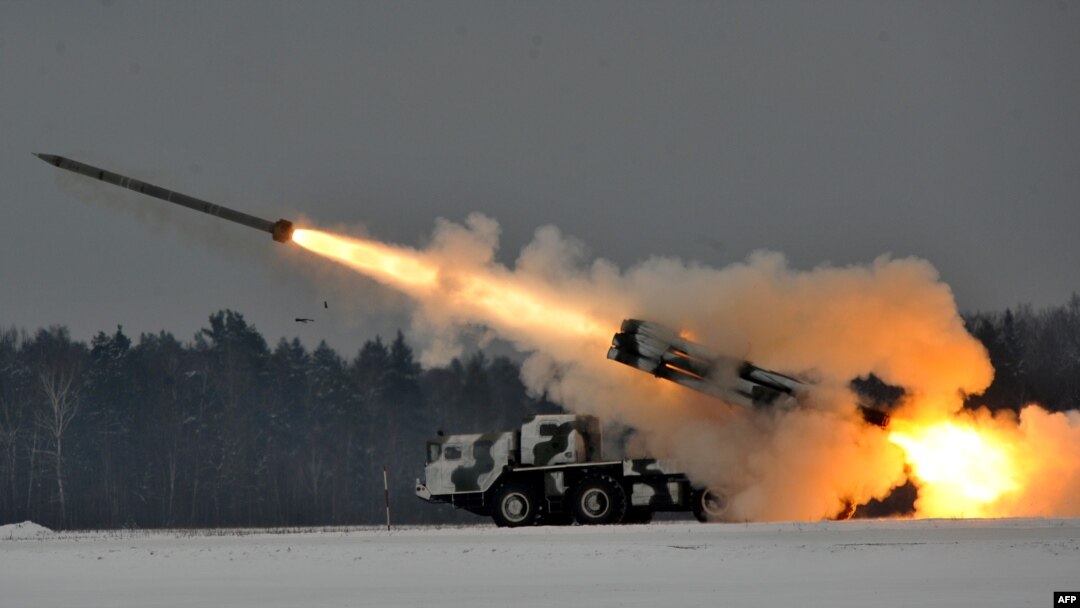Two weeks after a sharp escalation of the Nagorno-Karabakh conflict, the Armenian government moved on Friday to accelerate the purchase of new Russian-made weapons for Armenia’s armed forces with a $200 million Russian loan disbursed last year.
Prime Minister Hovik Abrahamian’s cabinet instructed the Armenian Defense Ministry to “ascertain” the list of those weapons and negotiate corresponding supply contracts with Russian government agencies overseeing arms deals with foreign states. It said the contracts must spell out “the volumes, prices and dates of the deliveries.”
The government also asked the Central Bank of Armenia (CBA) to quickly expedite banking operations required for the use of the $200 million loan allocated by the Russian government last June.

Armenia -- Russian Prime Minister Dmitry Medvedev (L) and his Armenian counterpart Ovik Abrahamyan arrive to hold a joint press conference following their talks in Yerevan on April 7, 2016.
Meeting with Russian Prime Minister Dmitry Medvedev in Yerevan on April 7, Arbahamian complained about a “certain slowdown” in the implementation of the loan arrangement by Rosoboronexport, Russia’s state arms exporter. He asked Medvedev to tell Rosoboronexport to “conclude the contracts” with the Armenian side.
The request came just two days after a Russian-mediated ceasefire halted the worst fighting between Karabakh Armenian and Azerbaijani forces since 1994. Many in Armenia feel that the April 2 Azerbaijani offensive in Karabakh was made possible by Russian-made offensive weapons worth more than $4 billion purchased by Baku since 2010. The escalation, which left more than 100 soldiers from both sides dead, rekindled and intensified Armenian criticism of the Russian arms sales to Armenia’s oil-rich arch-foe.
Both Abrahamian and President Serzh Sarkisian complained about those sales during their talks with Medvedev. The Russian premier effectively rejected the criticism in his subsequent public remarks, saying that Moscow delivers weapons to both Armenia and Azerbaijan and thereby sustains the “military balance” in the Karabakh conflict zone.
Almost two months ago, the Russian government disclosed a long list of military hardware which Yerevan will be allowed to buy with the $200 million credit. The deadliest of these weapons is the Smerch multi-launch rocket system with a firing range of up to 90 kilometers.
The publicized list also includes TOS-1A heavy flamethrower systems that are designed to destroy defense fortifications, enemy personnel and armored vehicles with thermobaric rockets.
Nagorno-Karabakh - Fragments of an unexploded rocket fired by Azerbaijani forces from a Russian-made Smerch multiple-launch system on a road in southeastern Karabakh, 5Apr2016.
Russia has reportedly sold 18 Smerch launchers and as many TOS-1A flamethrowers to Azerbaijan. The Armenian military claims that the Azerbaijani army used both systems during the April 2-5 hostilities on the Karabakh “line of contact.”
Armenia will also be able to buy Russian-made anti-tank weapons, shoulder-fired surface-to-air missiles, demining and communication equipment, armored personnel carriers and heavy military trucks.
The anti-tank systems include 9M133 guided missiles that first went into service with the Russian army in the late 1990s. The 135-milimeter rockets, also known as Kornet, can supposedly destroy tanks within a 4-kilometer range.
Citing another Russian-Armenian accord signed in 2013, Armenian military official have repeatedly stressed that Yerevan can now acquire brand new weapons at domestic Russian prices that are well below international market-based levels. The 2015 loan agreement makes a reference to that deal.
The military alliance with Russia has already enabled Armenia to receive many Russian weapons at discount prices or even for free over the past two decades.


